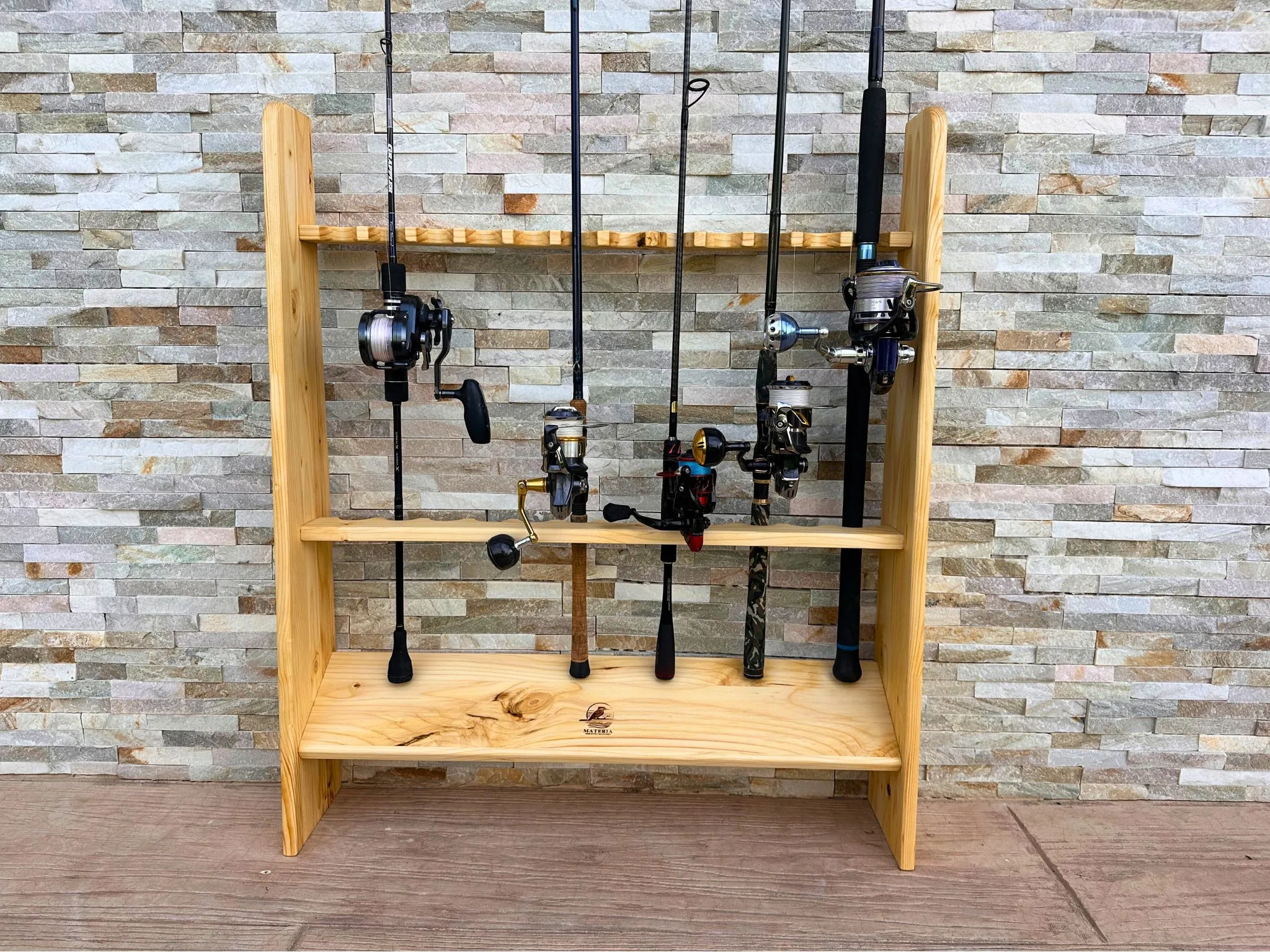If you’re passionate about fishing, a wooden fishing rod rack is one of those workshop builds that adds both functionality and character to your space. In this article, I’ll walk you through how I designed and built a 12-slot fishing rod holder entirely by hand, and why every angler should consider adding one to their gear room, garage, or workshop.
Why You Need a Wooden Fishing Rod Rack
A well-made wooden fishing rod rack is more than just storage — it’s a solution to a series of frustrating problems that every angler faces:
- Tangled lines and broken tips
- Rodes leaning dangerously in a corner
- Difficult access when prepping for a trip
Having a dedicated space where rods are stored vertically, evenly spaced, and easy to grab, makes your entire fishing routine smoother. It’s a piece of functional furniture that blends craftsmanship and necessity.
Design & Planning
Before building this wooden fishing rod rack, I took into account how many rods I wanted to store — in my case, 12. That meant designing upper and lower support bars with evenly spaced cutouts (every 6 cm), plus a wide enough base to ensure stability.
The rack had to be:
- Sturdy: to safely hold multiple rods without tipping over
- Compact: for easy placement in any room
- Aesthetic: I wanted it to match the natural style of other handmade pieces in my lab
I chose 19mm thick boards, each measuring 95×40 cm, which gave me the flexibility to cut all necessary parts from just a couple of planks.






Step-by-Step Construction
1. Cutting the Side Panels
I started with the two vertical side panels. I gave them rounded corners for a softer look and better safety. These panels act as the frame, so precision in height and angle is crucial.
2. Preparing the Rack Supports
The top and middle supports are the heart of the wooden fishing rod rack. I used a jigsaw to carefully carve out 12 U-shaped notches spaced at 6 cm intervals. These hold the rods in place, and I made sure to smooth the edges with a file and sandpaper to avoid damaging the rod handles.
The bottom shelf is wider, offering support to the butt of each rod. It also doubles as a platform for storing small tackle boxes or accessories.
3. Assembly
After all pieces were cut and sanded, I assembled the rack using wood glue and screws, making sure everything was square and stable. I pre-drilled holes to avoid any cracks, especially near the notches.
4. Finishing
For the finish, I applied boiled linseed oil — a traditional choice that enhances the grain and protects the wood without creating a plastic-like surface. It gives the wooden fishing rod rack a warm, natural tone that fits perfectly in any interior or workshop.
Benefits of a Handmade Wooden Fishing Rod Rack
Beyond solving practical issues, building your own wooden fishing rod rack offers a series of personal and environmental benefits:
- Customization: You can adapt the size, style, and number of slots to your needs.
- Sustainability: Made from solid wood and finished with natural oil.
- Craftsmanship: Each rack is a one-of-a-kind creation with character.
- Durability: Unlike cheap plastic racks, this one is made to last a lifetime.
Display with Pride, Not Just Store
One unexpected bonus? Displaying your rods proudly. A handcrafted wooden fishing rod rack turns your fishing gear into part of your home’s personality. Friends who visit often stop to admire it — and ask if I sell them (which, yes, I do, on Etsy!).
Final Thoughts
If you’re tired of clutter, broken tips, and digging through corners to prep for your next fishing trip, this project might be exactly what you need. My wooden fishing rod rack didn’t just clean up my workspace — it improved my entire fishing experience.
With a few tools, some good wood, and a weekend of work, you can build a piece that reflects your passion and adds lasting value to your space.
Want one for yourself but don’t want to build it? You can order your own handmade wooden fishing rod rack from my Etsy shop here.
Let me know in the comments if you’d like a free PDF of the plans or a step-by-step video guide!
Tight lines, Francesco
